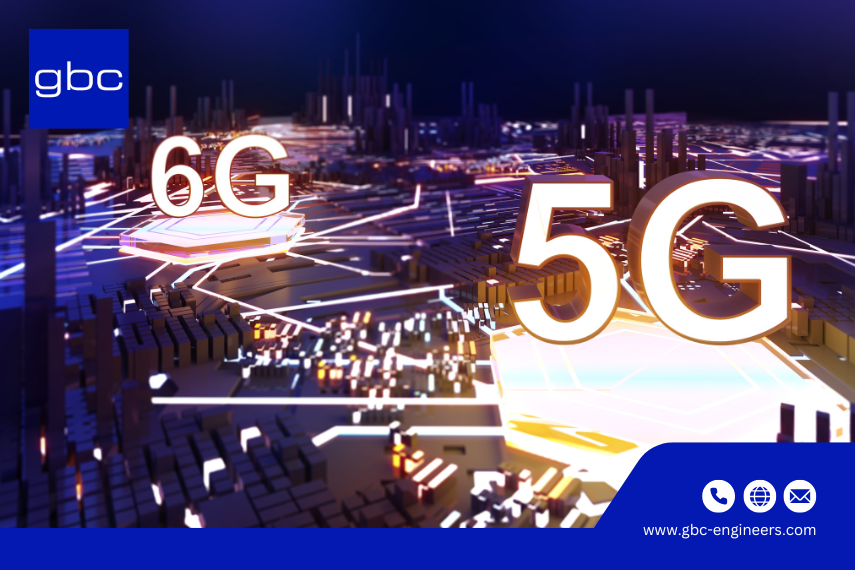The rapid evolution of digital technologies, including AI, 5G, and edge computing, is reshaping the landscape of data center design and operations. Modern data centers must now meet escalating demands for scalability, efficiency, and sustainability. This comprehensive guide explores key strategies for building and modernizing data centers to align with current and future technological trends.
Discover how modular architecture, software-defined infrastructure, and hybrid cloud strategies are transforming modern data center design with gbc engineers. Learn key trends and future-forward strategies.
The Shifting Supply and Demand Landscape
The global demand for data centers is surging, fueled by AI workloads, 5G networks, and the proliferation of connected devices. However, this growth brings challenges. According to AP News, Ireland's data centers, primarily around Dublin, now consume 21% of the nation's electricity, leading to concerns about energy sustainability and prompting the grid operator to pause new centers in the region until 2028.
To tackle these challenges, leading tech companies are rethinking their power distribution strategies. Google, for instance, has committed $20 billion to construct new data centers next to renewable energy sources such as solar and wind farms across the United States.
These efforts are designed to reduce the carbon footprint, relieve pressure on aging power systems, and ensure resilient, future-ready infrastructure capable of supporting increasingly complex artificial intelligence workloads. This approach not only enhances operational sustainability but also ensures reliable service delivery in the age of digital transformation.
(Source: Google’s future data centers will be built next to solar and wind farms | The Verge)

Strategies for Modern Data Center Design
From Legacy to Modular: Embracing Building Block Architecture
Traditional monolithic data centers are increasingly giving way to modular designs that offer greater flexibility and scalability. Modular data centers utilize standardized, prefabricated components that can be rapidly deployed and scaled as needed. This approach not only accelerates construction timelines but also allows for incremental expansion, aligning capacity with demand.
Modular construction has proven beneficial for data center architecture, aligning with the needs of rapidly evolving technology. By adopting modular designs, organizations can achieve:
- Faster Deployment: Prefabricated modules can be assembled on-site quickly, reducing time-to-market.
- Cost Efficiency: Standardization lowers construction and operational costs.
- Scalability: Easily add or remove modules to match changing capacity requirements.
- Improved Reliability: Factory-built modules undergo rigorous testing, enhancing quality control.
Critically, modular data centers are designed with enhanced power and cooling strategies to support dense computing environments. This includes precision-engineered HVAC systems and advanced uninterruptible power solutions that protect against downtime and ensure business continuity. These features are especially vital in AI-intensive environments, where uninterrupted processing and energy efficiency are non-negotiable.
By embracing modularity, organizations not only optimize their data center infrastructure but also future proof their operations, enabling rapid adaptation to technological advancements and shifting market needs. This evolution marks a pivotal step toward sustainable, resilient, and intelligent infrastructure in the era of digital transformation.
(Soucre: Evolution of Data Center Design: Modular Construction, Sustainable Architecture and Eclectic Form | ArchDaily)
Transitioning to Software-Defined Data Centers (SDDC)
Software-defined data centers (SDDCs) abstract hardware resources—compute, storage, and networking—into virtualized services. This abstraction allows for centralized management, automation, and rapid provisioning of resources.
IBM highlights that SDDC allows for centralized management of virtualized resources, enhancing agility and operational efficiency. Key benefits include:
- Enhanced Flexibility: Rapid provisioning and reconfiguration of resources to meet dynamic workloads.
- Improved Resource Utilization: Optimized allocation of compute, storage, and network resources.
- Automation: Reduced manual intervention through policy-driven management.
- Scalability: Seamless expansion to accommodate growth.
By embracing SDDC, organizations can achieve a more responsive and efficient data center environment, capable of supporting modern applications and services.
Prioritizing End-User Computing (EUC)
The rise of remote work and BYOD (Bring Your Own Device) policies has elevated the importance of End-User Computing (EUC) in data center strategies. EUC focuses on delivering secure, seamless access to applications and data across various devices and locations.
Key considerations for EUC:
- Performance: Ensure low-latency access to applications.
- Security: Protect data across diverse devices and networks.
- Scalability: Support a growing and dynamic user base.
- Implementing comprehensive EUC solutions ensures that data centers can effectively support a distributed and mobile workforce.
Read More: Data Center Services: Types, Importance, and Trends in 2025 - gbc engineers
Building a Hybrid Cloud Infrastructure
Hybrid cloud architectures combine on-premises infrastructure with public and private cloud services, offering a balanced approach to flexibility, control, and scalability. This model enables organizations to optimize workloads based on specific requirements and constraints.
This model allows organizations to:
- Optimize Workloads: Run sensitive applications on-premises while leveraging the cloud for less critical tasks.
- Enhance Resilience: Implement disaster recovery solutions across multiple environments.
- Control Costs: Scale resources as needed without significant capital expenditure.
By adopting hybrid cloud models, data centers can achieve greater agility and resilience in their operations.
Read More: 3 Types of Cloud Data Center Architecture - gbc engineers
Integrating Edge Computing and Micro Data Centers
The proliferation of IoT devices and the demand for real-time data processing have propelled the adoption of localized data processing architectures. This approach involves processing data closer to its source, reducing latency and bandwidth usage.
(Source: Edge computing and data centers in the age of AI - DCD)
Micro data centers, as highlighted by LinkedIn, are compact, modular units deployed at the network edge to support real-time data processing initiatives. Advantages include:
- Reduced Latency: Faster data processing and response times.
- Bandwidth Optimization: Decreased data transmission to central data centers.
- Scalability: Flexible deployment to meet localized demands.
- Resilience: Enhanced fault tolerance and disaster recovery capabilities.
Integrating edge technologies and micro data centers enables organizations to support emerging applications and services that require immediate access to and handling of data at the source.

Future Trends in Data Center Design and Operation
As digital demand surges and technologies like AI, IoT, and 5G advance rapidly, the data center industry is undergoing a dramatic transformation. No longer just giant warehouses filled with racks and wires, the next-generation data center is becoming a high-tech, sustainable, and AI-driven nerve center of the global economy.
The next decade will bring about radical changes in how these facilities are designed, built, and operated—with significant implications for both the private and public sectors.
Sustainable and Carbon-Neutral Design
In an era of mounting climate pressure and strict ESG targets, sustainability is becoming a non-negotiable aspect of data center design. The International Energy Agency (IEA) has repeatedly flagged the data center industry as a major energy consumer, accounting for nearly 1-1.5% of global electricity demand. In response, leading companies are pursuing net-zero goals and overhauling their approach to construction and operations.
5G/6G and Ultra-Fast Connectivity
The ongoing global rollout of 5G—and the looming arrival of 6G—will deeply influence data center design. Facilities will need to support ultra-high-speed, low-latency networks to cater to next-gen services like AR/VR, autonomous vehicles, and smart grid management.
These networks will also lead to a more distributed computing model, with thousands of interconnected edge nodes funneling real-time data to larger regional centers. In countries like South Korea and China, where 5G penetration is already advanced, firms like Tencent and Alibaba are designing facilities with 6G compatibility in mind, preparing for data throughput previously considered unimaginable.

Regulatory & Geo-Fenced Infrastructure
With rising concerns over data privacy and sovereignty, especially in regions like the EU, Southeast Asia, and Africa, future data centers will be designed to comply with strict localization requirements. Governments are introducing laws mandating that data be stored within national borders—Vietnam, India, and Brazil are recent examples.
This will drive the proliferation of smaller, localized data centers tied to specific regulatory zones. Operators will need to navigate complex legal environments and incorporate compliance mechanisms directly into infrastructure planning.
Liquid Cooling Goes Mainstream
Traditional air-based cooling systems are becoming obsolete in the face of AI and high-performance computing. The data center of the future will likely adopt liquid cooling systems at scale. According to The Financial Times, hyperscale players like Google, Microsoft, and Dell are shifting towards immersion cooling and cold plate technologies, which allow servers to be submerged in non-conductive liquids or cooled through direct contact with a circulating fluid.
This not only boosts energy efficiency but also enables more compact and high-density configurations. In addition, liquid cooling systems produce less noise, extend server lifespan, and are increasingly being seen as essential for operating in warm or tropical environments. For instance, Meta's newest hyperscale data centers in Asia are being constructed with liquid cooling as a default specification.
Ready to Future-Proof Your Data Center?
Partner with gbc engineers to design a facility that delivers performance, reliability, and long-term value.
🌐 Visit: www.gbc-engineers.com
🏗️ Explore Our Services: Services - gbc engineers
Conclusion
Modernizing data centers is imperative in today's digital landscape. By embracing modular designs, software-defined infrastructures, and sustainable practices, organizations can build agile, efficient, and future-ready data centers. Staying ahead of emerging trends like edge computing and AI integration will further ensure resilience and competitiveness in the evolving technological ecosystem.
gbc engineers is at the forefront of this evolution—offering expert solutions to build smarter, greener, and more resilient data center infrastructure for the next generation.